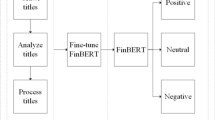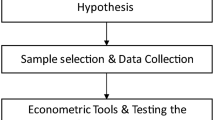Abstract
Pairs trading is one of the arbitrage strategies that can be used in trading stocks on the stock market. This paper incorporates pairs trading with the use of cointegration technique to exploit stocks that are temporarily out of equilibrium. In determining which two stocks can be a pair, Banerjee, Dolado, Galbraith and Hendry (1993) and Vidyamurthy (2004) showed that the cointegration technique is more effective than correlation criterion for extracting profit potential in temporary pricing anomalies between two stock prices driven by common underlying factors. By using stationary properties of cointegration errors following an AR(1) process, this paper explores the ways in which the pre-set boundaries chosen to open a trade can influence the minimum total profit over a specified trading horizon. The minimum total profit relates to the pre-set minimum profit per trade and the number of trades during the trading horizon. The higher the pre-set boundaries for opening trades, the higher the profit per trade but the lower the trade numbers. The number of trades over a specified trading horizon is estimated by using the average trade duration and the average inter-trade interval. For any pre-set boundaries, both of these values are estimated by making an analogy to the mean first-passage time. The aims of this paper are to develop numerical algorithm to estimate the average trade duration, the average inter-trade interval, and the average number of trades and to use these to find optimal pre-set boundaries that maximize the minimum total profit.
Similar content being viewed by others
References
Alexander, C., Dimitriu, A., 2002. The cointegartion alpha: enhanced index tracking and long-short equity market neutral strategies. Discussion Papers in Finance ISMA Center 2002–08, University of Reading.
Andrade, S., Di Pietro, V., Seasholes, M., 2005. Understanding the profitability of pairs trading. Working Paper, UC Berkeley Haas School.
ASX., 2008. Short selling. ASX Media Release, available at http://www.asx.com.au/about/pdf/mr20080306_short_selling%20.pdf.
Atkinson, K., 1997. The Numerical Solution of Integral Equations of the Second Kind. Cambridge University Press, Cambridge.
Banerjee, A., Dolado, J., Galbraith, J., Hendry, D., 1993. Cointegration, Error Correction, and the Econometric Analysis of Non-Stationary Data. Oxford University Press, New York.
Basak, G.K., Ho, K.-W.R., 2004. Level-crossing probabilities and first-passage times for linear processes. Advances in Applied Probability, 36(2), 643–666.
Bertram, W., 2009. An Overview of the Financial Markets and An Application of Financial Mathematics. Tribeca Investment Partners. Industry Seminar, School of Mathematics and Applied Statistics, Wollon-gong University.
Chiarella, C., Gao, S., Stevenson, M., 2008. Resolving the price-earning puzzle and related econometric issues. Working Paper, Faculty of Economics and Business, University of Sydney.
Do, B., Faff, R., Hamza, K., 2006. A new approach to modelling and estimation for pairs trading. Working Paper, Monash University.
Do, B., Faff, R., 2008. Does naive pairs trading still work? Working Paper, Monash University.
Ehrman, D.S., 2006. The Handbook of Pairs Trading: Strategies Using Equities, Options, and Futures. John Wiley & Sons Inc, New York.
Elliott, R.J., van der Hoek, J., Malcolm W.P., 2005. Pairs trading. Quantitative Finance, 5(3), 271–276.
Engelberg, J., Gao, P., Jagannathan, R., 2008. An anatomy of pairs trading: the role of idiosyncratic news, common information and liquidity. Available at SSRN: http://ssrn.com/abstract=1330689.
Engle, R.F., Granger, C.W.J., 1987. Co-integration and error correction representation, estimation and testing. Econometrica, 55(2), 251–276.
Fama, E.F., French, K.R., 1988. Permanent and temporary components of stock prices. Journal of Political Economy, 96(2), 246–273.
Galenko, A. Popova, E., Popova I., 2007. Trading in the presence of cointegration. Available at SSRN: http://ssrn.com/abstract=1023791.
Gatev, E.G., Goetzmann, W.N., Rouwenhorst, K.G., 2006. Pairs trading: performance of a relative value arbitrage rule. The Review of Financial Studies, 19(3), 797–827.
Gillespie, T., Ulph, C., 2001. Pair trades methodology: a question of mean reversion. In Proceeding of International Conference on Statistics, Combinatorics and Related Areas and the 8th International Conference of Forum for Interdiciplinary Mathematics, NSW, unpublished paper
Habak, C., 2002. Pairs Trading: Applying Cointegration to a Pairs Trading Strategy. Bachelor of Mathematics and Finance Honours Thesis, University of Wollongong.
Harris, R.I.D., 1995. Using Cointegration Analysis in Econometric Modeling. Prentice Hall, London.
Hong, G., Susmel, R., 2003. Pairs-trading in the asian ADR market. Available at http://www.bauer.uh.edu/rsusmel/Academic/ptadr.pdf.
Huck, N., 2009. Pairs selection and outranking: an application to the s&p100 index. Eurepean Journal of Operational Research, 196(2), 819–825.
Johansen, S., 1988. Statistical analysis of cointegrating vectors. Journal of Economic Dynamics and Control, 12, 231–254.
Lim, G., Martin, V., 1995. Regression-based cointegration estimators, Journal of Economic Studies, 22(1), 3–22.
Lin, Y.-X., McCrae, M., Gulati, C., 2006. Loss protection in pairs trading through minimum profit bounds: a cointegration approach. Journal of Applied Mathematics and Decision Sciences, (doi: 10.1155/JAMDS/ 2006/73803).
Liu, X., Song, H., Romilly, P., 1997. Are Chinese stock markets efficient? A cointegration and casuality analysis. Applied Economics Letters, 4(8), 511–515.
Mudchanatongsuk, S., Primbs, J.A., Wong, W., 2008. Optimal pairs trading: a stochastic control approach. 2008 American Control Conference, Washington, USA.
Narayan, P.K., 2005. Are the Australian and New Zealand stocks prices nonlinear with a unit root? Applied Economics, 37(18), 2161–2166.
Nath, P., 2003. High frequency pairs trading with U.S. treasury securities: risks and rewards for hedge funds. Working Paper, London Business School.
Rampertshammer, S., 2007. An Ornstein-Uhlenbeck Framework for Pairs Trading. Department of Mathematics and Statistics, University of Melbourne, Australia. Available at www.ms.unimelb.edu.au/publications/RampertshammerStefan.pdf
Rice, S.O., 1945. Mathematical analysis of random noise. Bell System Technical Journal, 24, 146–156.
Schmidt, A.D., 2008. Pairs Trading: A Cointegration Approach. Finance Honours Thesis, University of Sydney.
Vidyamurthy, G., 2004. Pairs Trading: Quantitative Methods and Analysis. John Wiley, New York.
Whistler, M., 2004. Trading Pairs — Capturing Profits and Hedging Risk with Statistical Arbitrage Strategies. John Wiley, New York.
Author information
Authors and Affiliations
Corresponding author
Rights and permissions
About this article
Cite this article
Puspaningrum, H., Lin, YX. & Gulati, C.M. Finding the Optimal Pre-set Boundaries for Pairs Trading Strategy Based on Cointegration Technique. J Stat Theory Pract 4, 391–419 (2010). https://doi.org/10.1080/15598608.2010.10411994
Received:
Revised:
Published:
Issue Date:
DOI: https://doi.org/10.1080/15598608.2010.10411994




